
What is 'innate behaviour'? Where does it feature in the environment? And how does it compare to 'learned behaviour? Learn about it in this video by The Virtual School.
- Material Type:
- Diagram/Illustration
- Lecture
- Date Added:
- 02/22/2013

What is 'innate behaviour'? Where does it feature in the environment? And how does it compare to 'learned behaviour? Learn about it in this video by The Virtual School.
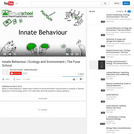
What is 'innate behaviour'? Where does it feature in the environment? And how does it compare to 'learned behaviour? In this Ecology GCSE / K12 video learn all of the answers to these questions.Are you a passionate teacher who would like to reach tens of thousands of learners? Get in touch: vsteam@fusion-universal.comFind out more: http://www.thevirtualschool.comThis video is distributed under a Creative Commons License: Attribution-NonCommercial-NoDerivs CC BY-NC-ND
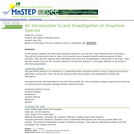
This activity is a project in which students research keystone species and report on specific species to the class.

This lesson aims to teach students about invasive species, native species, and non-native species. The lesson also covers the potential damages that an invasive species can cause to an ecosystem.
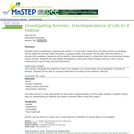
This activity is a field investigation where students will observe, discuss, and gather evidence on how environmental changes affect animals that live in that habitat.
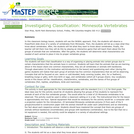
This activity is an interactive game that helps students learn that vertebrates are classified into five groups and that each group has common characteristics that distinguish the animal group from other respective groups.

Using segments from NATURE: "Moment of Impact, Part 2: Jungle," students will learn about skills and features that help species survive in the jungle.

Coastal environments are by their nature ever-changing. This unit looks at the example of the Blackwater Estuary in Essex, England, describing how the current state of the estuary came to be. It examines the contests and conflicts that center on the estuary in terms of managing the environment for human needs and the needs of the other species who make their habitat there.
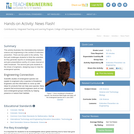
This activity illustrates the interrelationship between science and engineering in the context of extinction prevention. There are two parts to the activity. The first part challenges students to think like scientists as they generate reports on endangered species and give presentations worthy of a news channel or radio broadcast. The second part puts students in the shoes of engineers, designing ways to help the endangered species.

Learn how parental care is displayed by animals in their environment and how different species show parental care in different ways. As part of the Ecology topic from the Virtual School. Are you a passionate teacher who would like to reach hundreds of thousands of learners? Get in touch: vsteam@fusion-universal.com | Find out more: http://www.thevirtualschool.com | This video is distributed under a Creative Commons License: Attribution-NonCommercial-NoDerivs CC BY-NC-ND

This classroom activity introduces the yearlong topic of phenology and how to use the Weatherguide calendar.

Students learn about Lythrum salicaria, commonly referred to as purple loosestrife, and use their new knowledge, maps and their observation skills to identify changes to the land. They also identify threats to the ecosystem because of those changes, including biodiversity of native species, ecosystem functioning, and economic issues.
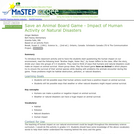
This student activity engages the students' thinking by listening to a story, brainstorming ideas in small groups about how human activity or natural disasters could possibly impact an animal's environment, and then reinforcing that thinking using a board game called Save an Animal.

Students explore biodiversity statistics by hypothesizing the number of animal species and comparing to scientific estimates.
Educators Guide for this unit:
http://education.eol.org/lesson_plans/2-5_ScienceSkills_BioblitzSkillbuilderOverview.pdf
Lessons in this unit:
Biodiversity Skillbuilder 1: Meet a Creature
Biodiversity Skillbuilder 2: ID That Bird!
Biodiversity Skillbuilder 3: How Diverse is Biodiversity?
Biodiversity Skillbuilder 4: Modeling Classification
Biodiversity Skillbuilder 5: ID Using a Dichotomous Key
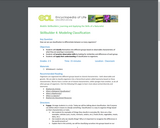
Students classify themselves into different groups based on observable characteristics of clothing and accessories, then apply to biological classification systems.
Educators Guide for this unit:
http://education.eol.org/lesson_plans/2-5_ScienceSkills_BioblitzSkillbuilderOverview.pdf
Lessons in this unit:
Biodiversity Skillbuilder 1: Meet a Creature
Biodiversity Skillbuilder 2: ID That Bird!
Biodiversity Skillbuilder 3: How Diverse is Biodiversity?
Biodiversity Skillbuilder 4: Modeling Classification
Biodiversity Skillbuilder 5: ID Using a Dichotomous Key
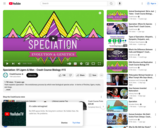
Hank explains speciation - the evolutionary process by which new biological species arise - in terms of finches, ligers, mules, and dogs.
Chapters:
1) Species
2) Hybrids
3) Reproductive Isolation
a) Post-Zygotic
b) Pre-Zygotic
4) Allopatric Speciation
5) Sympatric Speciation
6) Biolography
7) Dogs
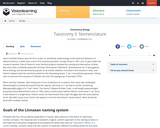
This module discusses how taxonomic names for the genus and species categories are formed and standardized, and how the rules are bent when it comes to famous beasts, such as well known dinosaurs.
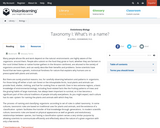
This is the first in a series of modules that introduce species taxonomy. This module introduces Carolus Linnaeus' work.
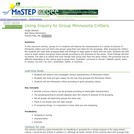
This activity is a teacher-guided inquiry activity of the sorting or grouping of Minnesota critters according to student driven criteria or purpose of their groupings. Teacher/student questions and discussion should be encouraged after this activity to emphasize that awareness of the criteria or purpose of certain groupings may be important before beginning an investigation.
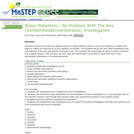
This lesson helps grade 3 students understand the difference between Vertebrates and Invertebrates.